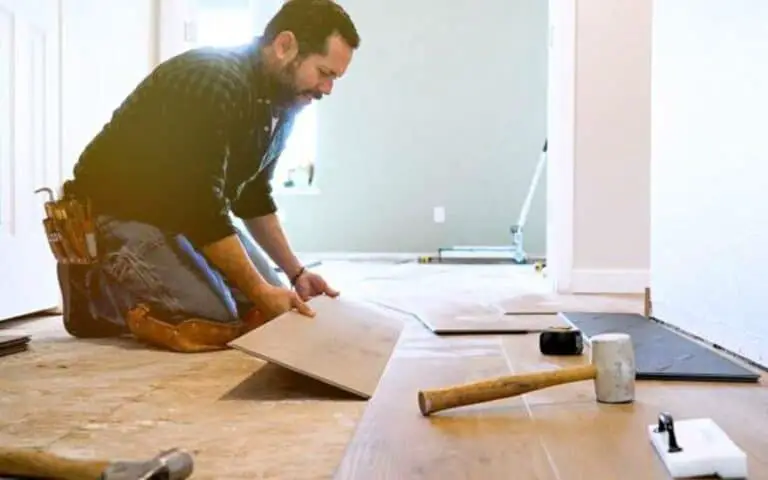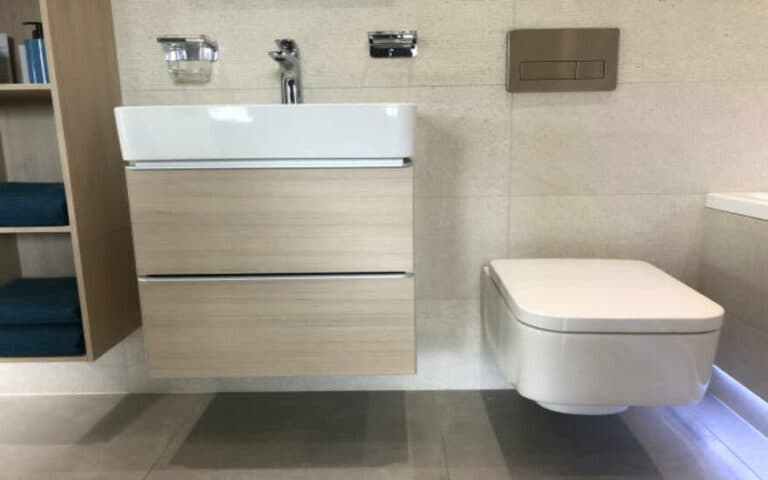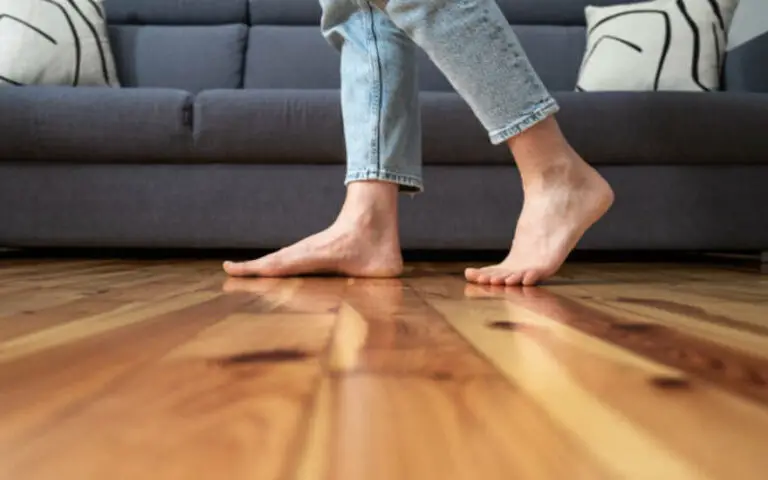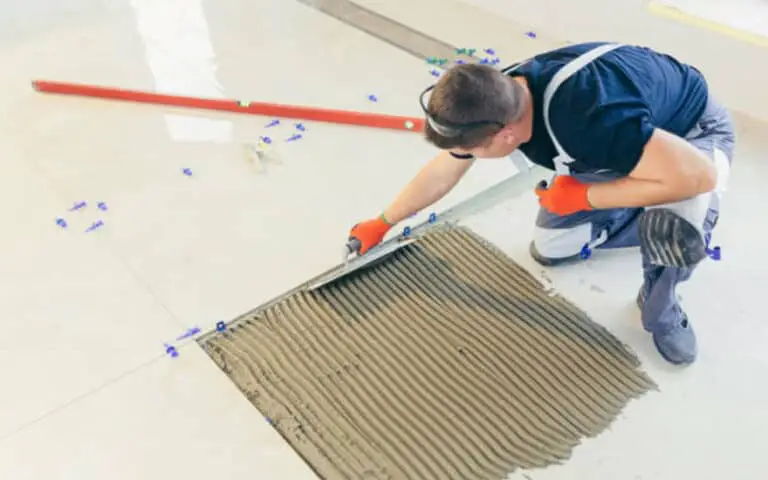I’ve covered whether you’re searching for something practical, modern, or classic. This blog post will explore the different flooring materials perfect for creating an inviting outdoor bathroom.

What type of flooring is best for outdoor bathrooms?
In areas with a lot of moisture, such as coastal areas, you may opt for waterproof materials like tile or vinyl. For areas that experience extreme weather conditions like hot summers and cold winters, opt for a more resilient option like stone.
Additionally, it’s important to consider the safety of the flooring surface as you want to ensure it’s slip-resistant, especially if there is water present.
10 things to Consider about outdoor bathroom Flooring
When choosing the right flooring for your outdoor bathroom, remember a few things. You want durable, easy-to-maintain, slip-resistant, and water-resistant flooring.
You also need to consider the aesthetics of the flooring, the cost, and the installation process. Finally, it would be best if you also thought about the environmental impact of the flooring and its safety features. Here are ten things to consider when selecting outdoor bathroom flooring:
1. Durability
Durability is one of the most important factors when choosing outdoor bathroom flooring. It must withstand moisture, harsh weather conditions, and the wear and tear of regular use. When it comes to outdoor bathroom flooring, ceramic tile is a great choice.
It’s waterproof, low maintenance, and resistant to fading, staining, and cracking. Plus, it comes in various colors and designs to suit any style. Another option is wood flooring, which is durable and easy to maintain with regular sealing.
2. Ease of Maintenance
Regarding ease of maintenance, outdoor bathroom flooring is a breeze to keep clean and look great. Most options are highly durable, so you won’t have to worry about replacing them often. Plus, many are stain-resistant and can be wiped down with a damp cloth.
You can also opt for an anti-slip finish on your flooring to ensure your bathroom stays safe and slip-free. And since they’re mostly waterproof, you don’t have to worry about moisture damage.
3. Slip Resistance
Slip resistance is important when choosing the floor for your outdoor bathroom. You want to ensure that your flooring is sturdy, durable, and safe for your family and guests. Slip-resistant flooring can help prevent slips and falls in wet areas, such as around showers, tubs, and other water sources.
When selecting flooring for your outdoor bathroom, make sure to look for materials that are specifically designed to be slip resistant. Look for materials that are textured, such as stone or ceramic tiles, as well as materials that are treated with a non-slip coating or finish.
When installing outdoor bathroom flooring, follow the manufacturer’s instructions carefully and use the proper adhesives and sealants. Make sure to use a bond that is specifically designed for wet areas, such as one that is waterproof and slip-resistant.
This will help ensure that your flooring is secure and stable while providing maximum safety for your family and guests.
4. Water Resistance
Many outdoor bathroom flooring materials are not designed to be waterproof and can easily be damaged by standing water or moisture. You may choose from several different materials, including hardwood, composites, and waterproof vinyl flooring and tile.
Find the ideal fabric for your outdoor bathroom to keep it looking wonderful for years to come, within your budget and personal tastes.
5. Aesthetics
Fortunately, there are many options for outdoor bathroom flooring that look great and offer a range of aesthetic benefits. From natural stone to wood-look tiles and beyond, you’ll be able to find a flooring option that complements the overall look of your outdoor bathroom.
If you’re looking for an upscale look, consider natural stone such as marble, travertine, or slate. For a more modern look, try ceramic or porcelain tiles that mimic the look of wood or stone.
If you’re looking for something unique, you can get creative with patterned tiles or bright colors. The possibilities are endless for outdoor bathroom flooring, so be sure to explore all available options and find something that will bring your vision to life!
6. Costs
Costs are an important factor when considering outdoor bathroom flooring. It is important to look at the upfront cost of the material, installation, maintenance, and potential repairs.
Acacia hardwood, roof tiles, and ceramic tiles are often more expensive than other materials like rubber and vinyl. Still, they can last much longer and require less maintenance. It’s also important to consider the waterproofing cost when installing outdoor bathroom flooring.
7. installation Process
First and foremost, you’ll want to ensure that the flooring is installed correctly and safely. This ensures the tiles are level and securely attached to the base surface. Additionally, you’ll want to ensure that the flooring is appropriate for the climate where it is being installed.
For example, if you live in an area with extreme temperatures, you’ll want to ensure that the flooring can withstand those temperatures without warping or cracking.
Another important factor to consider when installing outdoor bathroom flooring is the material used. Each material has advantages and disadvantages and should be chosen based on your specific needs. For example, ceramic tile is generally less expensive and easier to install than stone or wood, but it is also more prone to cracking and staining in extreme temperatures.
8. Environmental Impact
Not only will you be impacting the environment in terms of the materials used, but you’ll also be impacting the environment when it comes to installation and maintenance.
For example, certain types of flooring, such as vinyl or linoleum, require a significant amount of energy to manufacture, which can harm the environment. Similarly, certain flooring types may require harsh cleaning and maintenance chemicals, which can adversely affect the environment.
Additionally, you’ll want to consider the material used in your outdoor bathroom flooring. Furthermore, you’ll want to ensure that any natural materials you use are sourced from sustainable sources.
9. Safety
Safety is always an important factor to consider in outdoor bathrooms. They are choosing a slip-resistant flooring material that won’t become hazardous when wet is essential. Non-slip surfaces, such as textured tiles, are ideal for outdoor bathrooms, as they provide extra traction on wet or slippery surfaces.
It is also important to consider the health implications of using certain materials in outdoor bathrooms. Some materials may contain volatile organic compounds (VOCs) or other hazardous chemicals that can irritate or cause even more serious health issues.
10. Incorporating Natural Elements
Incorporating natural elements into your outdoor bathroom flooring can create a peaceful and relaxing atmosphere. Natural stone, such as slate, granite, and travertine, is a great choice for outdoor bathroom floors because of its durability and water-resistant properties.
Wood flooring is also great for outdoor bathrooms, providing a warm and inviting feel. If you’re looking for something unique, try bamboo or cork flooring. These materials are eco-friendly, easy to clean and offer a unique texture and color.
Are there any special considerations when installing outdoor bathroom flooring?
When installing outdoor bathroom flooring, there are several considerations that you should keep in mind. First and foremost, the flooring must be able to withstand the elements and be able to stand up to rain, snow, and other weather conditions. Additionally, you’ll want to ensure the flooring is slip-resistant, waterproof, and durable.
You’ll also want to consider the cost of installation, the ease of maintenance, and the environmental impact of your choice. Finally, it would be best if you thought about the aesthetic appeal of your choice and how it will look in your outdoor space.
How do you waterproof outdoor bathroom flooring?
Waterproofing your outdoor bathroom flooring is essential to ensuring that it remains in good condition for years to come. Depending on the kind of flooring you have installed, there are a few different options. A sealant may protect ceramic tiles from water damage and stains. Rubber flooring can be treated with a water-resistant coating to help repel water.
For wood floors, consider a polyurethane sealant that will form a protective barrier against moisture. Additionally, invest in a drain system for your outdoor bathroom to help keep the floor dry, and further protect your flooring from water damage.
Summary
In summary, when choosing outdoor bathroom flooring, there are many factors to consider. Durability, ease of maintenance, slip resistance, water resistance, aesthetics, costs, installation process, environmental impact, safety, and incorporating natural elements should all be considered when selecting.
Additionally, special considerations must be considered when installing outdoor bathroom floorings, such as waterproofing and proper drainage. With the right research and careful consideration of your options, you can find the perfect outdoor bathroom flooring to suit your needs and budget.






